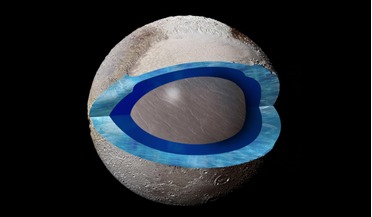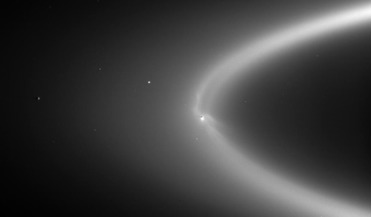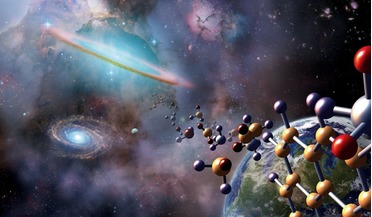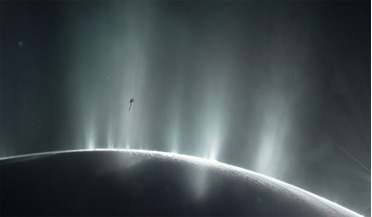 18 November 2016
Pluto's heart is an ocean of slushy ice
18 November 2016
Pluto's heart is an ocean of slushy ice
..., which would have blasted away a huge amount of Pluto's icy crust. As the object impacted the surface, if a subsurface ocean existed, it would create an upwelling of water that pushing up against the thinned and weakened crust of ice. At equilibrium...
 June 2020
Titan’s evolving atmosphere
June 2020
Titan’s evolving atmosphere
... and on the surface and because of the probable subsurface ocean of liquid water. Titan, which is larger than the...Its habitability is also bolstered by the idea that if a liquid-water ocean on Titan is as geologically active as those on our planet, it...
 22 June 2020
Icy Pluto may have started off hot with an early ocean
22 June 2020
Icy Pluto may have started off hot with an early ocean
... of the disk, heat from the evolving star stops material from freezing. Once it became a giant snowball, a subsurface ocean started to develop due to warming from radioactive decay. Growing a planet from accretion is how all planets are...
 07 July 2017
Unexpected large methanol find near Enceladus
07 July 2017
Unexpected large methanol find near Enceladus
... at Enceladus are possible using ground-based facilities. However, to understand the complex chemistry in these subsurface oceans, we will need further direct observations by future spacecraft flying through Enceladus’s plumes,” adds Drabek-Maunder...
 July 2020
Life in the universe – common or not?
July 2020
Life in the universe – common or not?
...Earth’s history, implying a low abiogenesis probability on Earth. And, although there is a chance that life might be lurking in subsurface oceans under the icy crust of Europa, we haven’t found it yet or found evidence of any other life outside Earth...
 06 November 2017
Enceladus more active than previously thought
06 November 2017
Enceladus more active than previously thought
... a seemingly frigid body. And if no other heating mechanism is available then it is suggested that the suspected subsurface ocean would have crystallised into ice within 30 million years. Now, an international team of scientists working on Cassini...